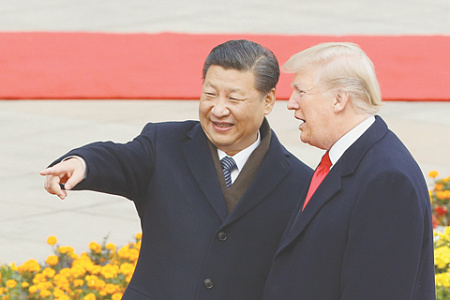
In a last-minute decision, U.S. President Donald Trump has declared a temporary halt to the escalating trade dispute with China, pulling back from the brink just as a new wave of American tariffs was set to take effect. The move introduces a paradox into U.S. foreign policy: while granting a reprieve to its primary global competitor, the White House has maintained punitive measures against partners like India, which faces a 50% tariff on its goods, partly for its continued oil purchases from Russia. This selective use of economic pressure underscores that tariffs remain a central and unpredictable tool of American policy, ensuring continued volatility in global markets.
The executive order, signed just hours before the August 12 deadline, extends the existing trade truce with China for another 90 days, pushing any potential escalation to November 10. According to The New York Times, this crucial pause is designed to give both nations breathing room to negotiate a resolution to their deep-seated economic disagreements. More significantly, it opens a window for a potential summit between Donald Trump and Chinese President Xi Jinping later this year, a meeting Trump has suggested is contingent on the success of the ongoing talks.
The decision was preceded by high-stakes drama. As the deadline loomed, Trump took to his Truth Social platform to publicly urge China to quadruple its purchases of American soybeans, framing it as a boon for U.S. farmers. This public pressure was part of a broader negotiation strategy that saw high-level officials from both countries meeting in Stockholm in July to hammer out an interim agreement. In response to the truce, China’s Ministry of Commerce announced it would pause some of its own retaliatory restrictions on U.S. goods.
This de-escalation marks a new chapter in a trade war initiated by Trump, which had previously seen the U.S. impose tariffs as high as 145% on Chinese goods, prompting a 125% retaliatory tariff and restrictions on crucial rare-earth metal exports from Beijing. A previous 90-day truce had already lowered these duties to 30% for the U.S. and 10% for China. The latest negotiations have expanded beyond tariffs to address more systemic issues, including China’s industrial overcapacity, its energy trade with Russia and Iran, and U.S. export controls on advanced microchips essential for China’s artificial intelligence ambitions.
In a unique arrangement aimed at balancing national security with corporate interests, the Trump administration has reportedly struck a deal with tech giants Nvidia and Advanced Micro Devices. The companies will be permitted to sell AI chips to China but must pay the U.S. government 15% of their revenue from these sales. This intricate approach to China contrasts sharply with the administration’s actions toward other nations. While the U.S. has recently secured investment-for-tariff-reduction deals with Japan, South Korea, and the European Union, it has simultaneously doubled tariffs on India for its Russian oil imports—a practice China also engages in but for which it has received a pass.
U.S. Vice President J.D. Vance acknowledged that the issue of Russia’s oil was discussed with Beijing but stated that Trump chose not to act due to the complexity of the U.S.-China relationship. This echoes past challenges, including a major agricultural purchase agreement under Trump’s first term that Beijing failed to fulfill, citing the COVID-19 pandemic and deteriorating bilateral relations. Now, Trump has made it clear that a future meeting with President Xi is conditional. “He has asked for a meeting, and I will most likely say yes if we have a deal by the end of the year,” Trump stated, adding, “If we don’t have a deal, I will not be having the meeting.”
